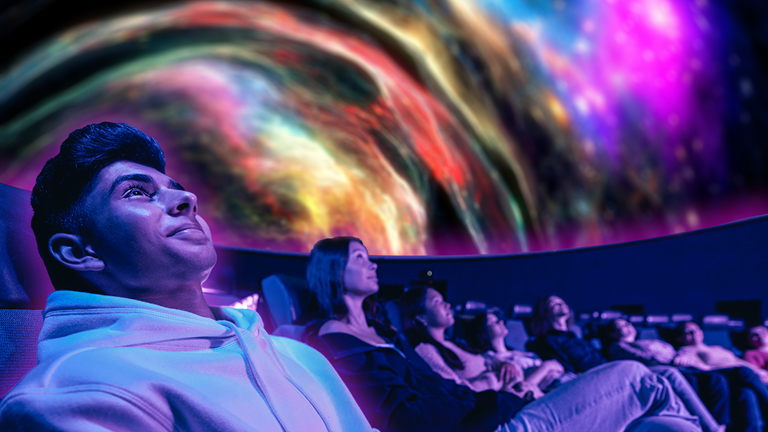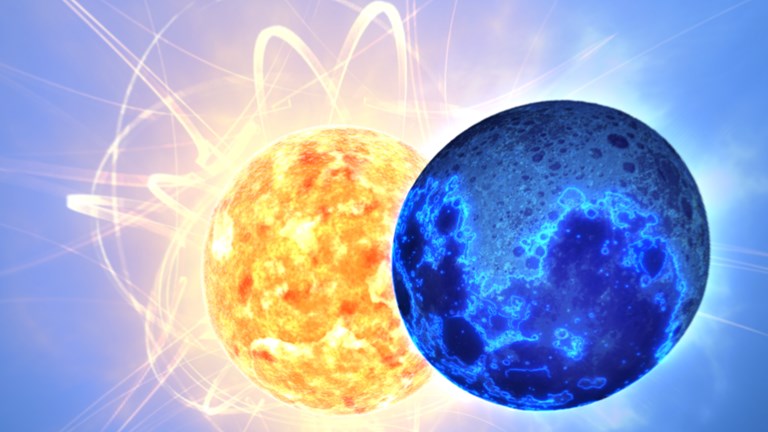Skynotes: June 2023
Upcoming events
Winter Solstice
It is Winter Solstice this month in the southern hemisphere. On 22nd the sun rises and sets at its most northerly points on the horizon. Its path across the sky is lowest and shortest giving us our shortest day of the year. The sun’s rays reach the ground at their shallowest angle (hence long shadows) and provide the least solar energy per square metre.
Solstice comes from the Latin sol (sun) and sistere (stand still). At the solstice the Sun “stands still” at its northernmost point after which its path shifts southwards leading inexorably to the spring equinox.
Solstices and equinoxes result from the Earth’s rotational axis being titled at an angle of 23.5 degrees from its orbit around the Sun.
Explore time and date - June Solstice and the learning activity Museums Victoria - Reasons for the Seasons.
Melbourne Sun times
| Date | Rise | Set | Day length | Solar noon§ |
|---|---|---|---|---|
| Tuesday 1st | 7:26am | 5:09pm | 9:43 hours | 12:17pm |
| Sunday 11th | 7:31am | 5:07pm | 9:35 hours | 12:19pm |
| Wednesday 21st | 7:36am | 5:08pm | 9:32 hours | 12:21pm |
| Friday 30th | 7:36am | 5:11pm | 9:34 hours | 12:23pm |
§ When the sun is at its highest, crossing the meridian or local longitude.
Moon phases
| Phase | Date |
|---|---|
| Full Moon | Sunday 4th |
| Third Quarter | Sunday 11th |
| New Moon | Sunday 18th |
| First Quarter | Monday 26th |
Moon distances
Lunar perigee (closest to Earth) is on Wednesday 7th at 364,861km.
Lunar apogee (furthest from Earth) is on Friday 23rd at 405,385km.
Planets
Mercury rises in the east from 5.30am early in the month and by 6am mid-month. It is moving closer to the sun and by late June it will no longer be visible.
Venus as the ‘evening star’ continues to be visible from 5.30pm in the west before setting around 8.30pm. It has reached its greatest elongation or angular distance from the sun, and will be now be seen progressively lower each evening. See EarthSky - Venus after sunset.
Mars, the Red Planet, remains in the north-west from 5.50pm before setting around 9pm this month. It is currently 295 million km from Earth but not as bright compared to when closest to Earth at 54.6 million km which occurs every 2 years. See theskylive – Mars.
Jupiter is a bright early morning planet this month rising in the east from 4am early in the month and by 3am late in the month, before fading in the dawn light before sunrise.
Saturn with its yellowish tinge rises around midnight early in the month and earlier each night before reaching its highest elevation in the north at 5.30am after which the ringed planet is lost before dawn.
Meteors
There are minor meteor showers this month centred in Scorpius and Sagittarius, and The Bootids can also appear from very late June into early July. Although low in number (less than 10 per hour) they can often be spectacular and bright with many displaying a yellow/orange colour. The best time to see meteors is after midnight with no moon in the night sky.
The Arietid Meteor Shower (in the constellation of Aries) occurs through to June 24 but peaks on June 11th. From Melbourne the shower is likely best seen just before dawn. For full details see In-the-sky : Arietid Meteor Shower 2023.
Stars and constellations
In the west
Orion has disappeared below the western horizon but his two dogs Canis Major with the star Sirius (low in the west) and Canis Minor with the star Procyon (low in the north-west) are still both in our skies.
In the north
Leo the lion is still visible in the north-west with the bright star Regulus. Look for a large hook of stars, or inverted question mark, to locate his curving mane and shoulders.
In the east
Scorpius is in the south-east this month with the red-giant star Antares as the middle of three stars that form the scorpion’s body. During winter the centaur-archer Sagittarius suits below the scorpion with its bow and arrow (the famous ‘Tea Pot’ asterism).
Sagittarius and Scorpius with Antares in the east. A Stellarium view at 8pm on 10 June.
In the south
High in the south-east is Crux or The Southern Cross with the Pointers (Alpha and Beta Centauri) lower down. In darker skies the two neighbouring galaxies, the Large and Small Clouds of Magellan, can be seen as small isolated patches in the south-west. From our southern latitude they are easily seen every night.
From less-polluted skies the Milky Way’s broad band of billions of stars and numerous interstellar dust clouds stretches across the sky from horizon to horizon. Some foreground stars in our local region of the galaxy can be seen but the dust clouds obscure our view further into the galaxy, however, infrared telescopes can reveal much that is hidden to our eyes and optical telescopes that utilise only the visible part of the spectrum.
See NASA-JPL video Interstellar Clouds and Dark Nebulae.
International Space Station
ISS orbits every 90 minutes at an average distance of 400 km appearing like a bright star moving slowly across the night sky. Here are some of the brightest passes expected this month over Melbourne:
Morning
- Monday 5th, 6.40am – 6.46am South-West to East-North-East
- Thursday 8th, 5.53am – 5.57am West to North-East
Evening
- Sunday 19th, 6.22pm – 6.27pm West-North-West to South-East
- Monday 20th, 5.33pm – 5.40pm North-West to South-East
Heavens Above gives predictions for visible passes of space stations and major satellites, live sky views and 3D visualisations. Be sure to first enter your location under ‘Configuration’.
On this day
1st 2022, Czech Republic becomes the first country to ban light pollution.
2nd 1966, Surveyor 1 (USA) reaches the Moon as first probe to land on another body.
3rd 1965, Ed White takes America’s first spacewalk as part of Gemini IV.
6th 1971, Soyuz 11 (‘Union’ 11, USSR) carries the first people to a space station (Salyut 1 or ‘Salute’ 1).
7th 1879, Joan Voute proves with parallax that dwarf star Proxima Centauri is the same distance as Alpha Centauri binary.
8th 2004, a Transit of Venus is observed, the first in 122 years.
9th 1986, Rogers report on Space Shuttle Challenger explosion reveals solid rocket booster fault and serious management and safety problems with US program.
10th 2003, launch of Mars Exploration Rover Spirit (USA) which lands in 2004 and exceeds expectations operating to 2010.
13th 1983, Pioneer 10 (USA) becomes the first spacecraft to travel beyond the planets of the Solar System.
13th 1983, Hyabusa (Japan) craft returns the first asteroid samples to Earth.
14th 1962, European Space Research Organisation (ESRO) begins, later to be part of the European Space Agency (ESA).
15th 763 BCE, Assyrians record a total solar eclipse which helps date other events in Mesopotamian history.
16th 1911, a meteorite weighing 772g strikes a barn in rural Wisconsin (USA).
16th 1963, Valentina V. Tereshkova (USSR) becomes the first woman in space in Vostok 6, the first civilian into space, and the only woman to undertake a solo space flight
17th 1969, Venera 6 (‘Venus 6’, USSR) descends into Venus’ dense atmosphere sending data before being crushed by rising pressure.
18th 1983, Sally Ride becomes the first American woman in space aboard Shuttle Challenger.
20th 1990, Asteroid Eureka found as part of the Trojans asteroid group orbiting at Mars’ L5 Lagrange point.
21st 2004, SpaceShipOne (USA) is launched as the first privately-funded human space flight.
21st 2006, Pluto’s small moons Nyx and Hydra are named.
22nd 1633, Galileo recants his sun-centred solar system model under threat of torture by the Catholic Inquisition.
22nd 1978, Dr James W. Christy (USA) discovers Pluto’s large moon Charon.
24th 1883, discoverer of cosmic rays, Victor Francis Hess, is born.
24th 1915, birth of Fred Hoyle, who later explains the creation of elements in stars, promotes the steady state model of the universe, and coins the pejorative term ‘big bang’ for the rival model of the universe’s creation.
24th 1997, first life-threatening space collision occurs as Russia’s Progress supply craft collides with Mir Space Station during a test docking while not using its automated docking and radar system. The ageing problem-plagued station suffers a 3cm puncture in its Spekr module which quickly depressurises. US astronaut Mike Foale evacuates from the damaged module in time and Mir spins out of control as solar power is lost. Progress rebounds but is later safely de-orbited to burn up. Control is slowly regained by cosmonaut Vasily Tsbliev assisted by cosmonaut Aleksander Lazitkin and Foale. This serious incident heightens tensions between the American space agency NASA and their Russian counterpart Roscosmos.
29th 1818, Angelo Secchi born, one of the first astronomers to believe the Sun is a star.
29th 1961, first use in space of a radioisotope thermoelectric generator (RTG) using plutonium which powered a US Navy NAVSAT satellite Transat4A.
29th 1995, Space Shuttle Atlantis (USA) – first docking at Russia’s Mir Space Station.
30th 1908, The Tunguska Event; a meteor several metres in size explodes over Tunguska (Russia) destroying 2,200 km2 of forest in a multi-megaton blast.
30th 1971, Soyuz 11 (USSR) is the only mission to visit the first space station Salut 1 (USSR) after which its crew of three become the only humans known to have died in space when their cabin depressurises prior to or during re-entry.


